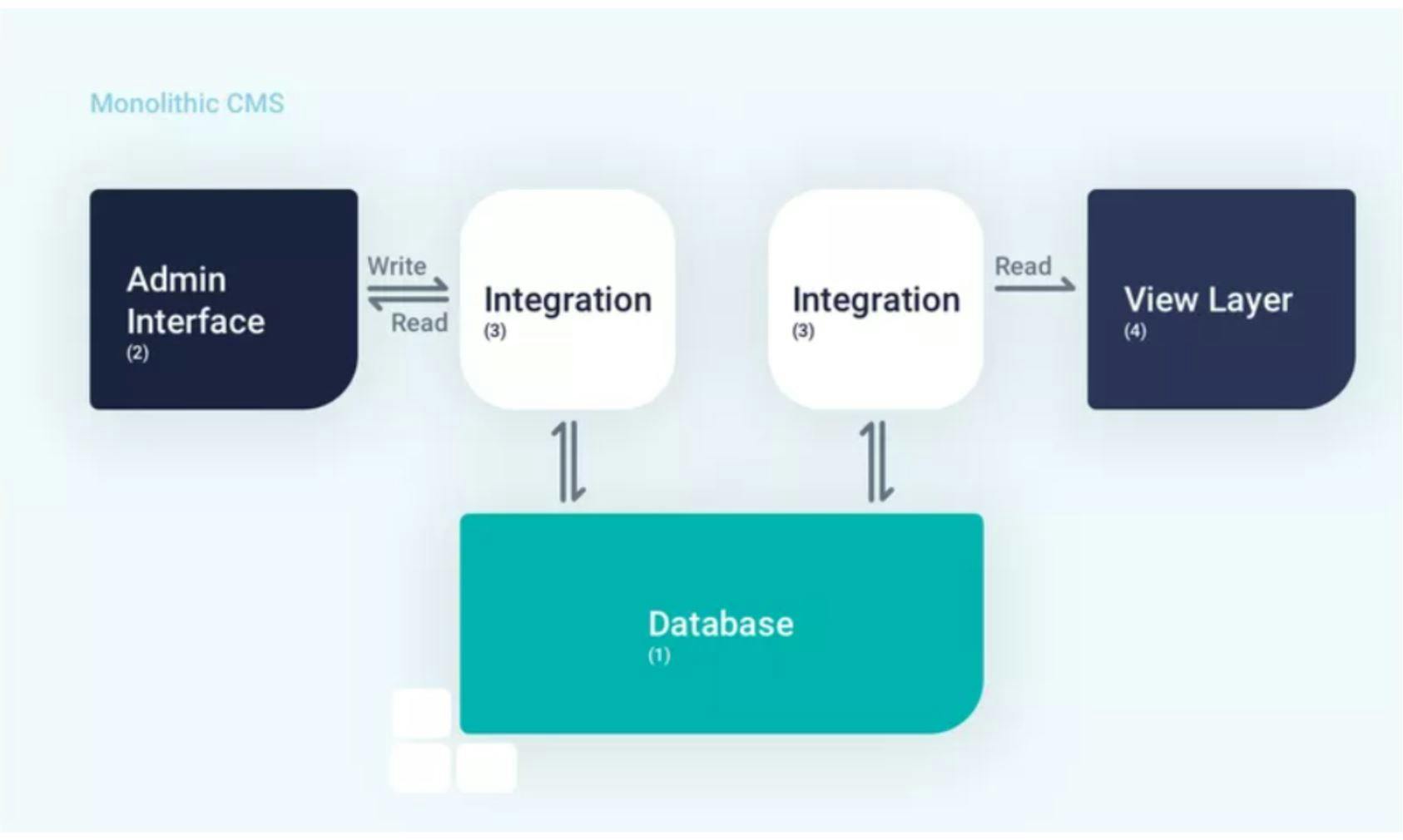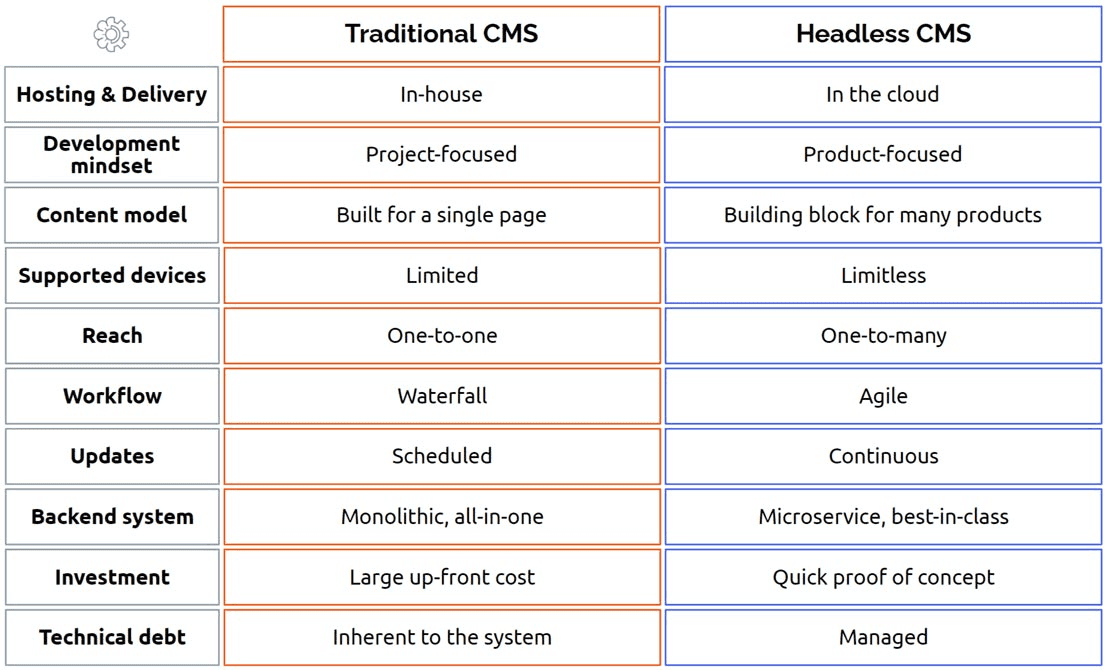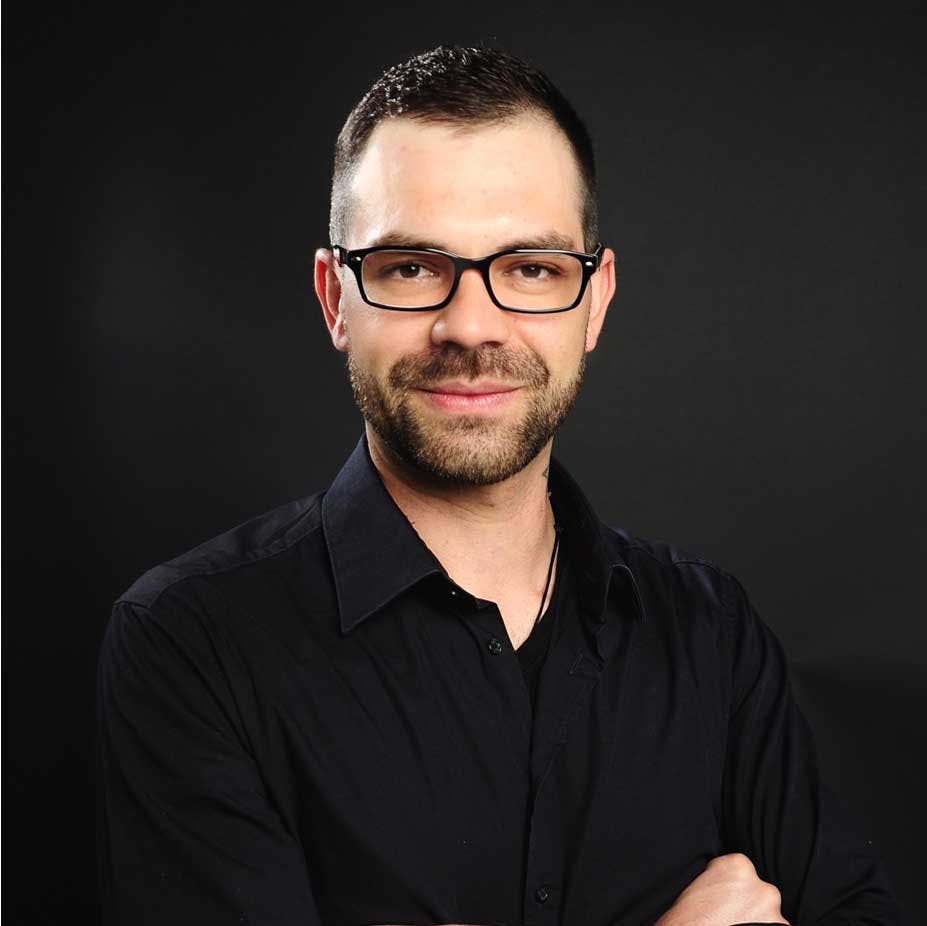Headless CMS Learn what a headless CMS is
The traditional CMS architecture was once the standard for web development, but today businesses are looking for the greater flexibility and scalability that headless CMS software solutions offer them. Learn more about the differences between a traditional CMS, a headless CMS, and the next generation of content management.

- The demands of a modern CMS
- What is a Headless CMS?
- The interface (API) of the Headless CMS
- How is a traditional CMS structured?
- The difference between a headless CMS and a traditional CMS
- The Headless CMS summarized in 7 points
- Conclusion about Headless CMS as a modern software solution
- Take your content management to the next level now - get in touch with us
The demands of a modern CMS
Designed for implementation. Content management systems (CMS) have been around since the dawn of web development. Platforms such as Wordpress, Drupal, and Sitecore were developed to store and present content elements such as text, images, and videos on websites.
Traditional content management with content management systems collected everything into one big bucket. This made it difficult to reuse content because it was mixed with code.
Today, companies are developing websites, mobile apps, digital ads, and conversational interfaces. However, this has led to a need for more flexible solutions, as the traditional CMS cannot keep up with the demands of digital marketing. This is because a CMS organizes content into webpage-oriented frameworks, which makes it impossible for the same content to fit on other digital platforms or software.
What is a Headless CMS?
A headless CMS, also known as headless software, is a modern CMS where the content repository is decoupled from the presentation layer - the frontend (head or head) - from the backend. The area where the content is managed (content repository), the visible part of a website (frontend) and the place where the data is stored (backend) are no longer tightly bound to each other. Content stored in the backend, such as text, images or videos, is now passed to the frontend via an interface (application programming interface or API for short ) such as RestAPI or GraphQL.
This is key to omnichannel strategies, as you can integrate content with any system, software or website by simply calling the APIs provided by the headless CMS.
The interface (API) of the Headless CMS
The content resp. the data is delivered via the interface of the Headless CMS to all possible websites, devices or digital touchpoints. The content can thus be reused x times - no matter which communication channels you use today or in the future. This is a key difference to classic, monolithic CMSs such as WordPress or Typo3. In these systems, the backend and frontend are tightly coupled.
You can imagine the following with a headless architecture and API's: the main task of the headless CMS is to manage the content. It doesn't matter what is eventually done with the content. In contrast, a website or mobile app is about presenting the content to people, and people don't care where the content is stored and managed. Consequently, the API is the magic connection between the backend (e.g., headless CMS) and frontend (e.g., a website). This connection communicates with the systems in a specific way, according to the needs of a digital marketing team.
The following graphic from Storyblok gives you an overview.

How is a traditional CMS structured?
In a traditional CMS, the content is connected to the front end (the website) and there is no way to play on different communication channels. For this, the content has to be reprocessed and new interfaces have to be added over and over again. This is illustrated in the following graphic from Storyblok.

The difference between a headless CMS and a traditional CMS

The Headless CMS summarized in 7 points
Bespoke different communication channels with the same content.
Focus on the content rather than the front-end structure.
Get a massively faster performance.
Offer your customers an always up-to-date omnichannel experience.
Reduce your costs through efficient content management.
Get more security through a modern IT environment.
Implement your ideas and innovations faster.
Conclusion about Headless CMS as a modern software solution
Modern companies want to be prepared for the future. First and foremost for new, innovative ideas and ways to market and present their products and services - not only via the classic website.
The possibilities are endless and more smart devices are constantly being added as communication channels. With a traditional CMS, you are no longer equipped for this. A headless CMS, on the other hand, opens up the new digital possibilities for every company to fully exploit and use.
Take your content management to the next level now - get in touch with us
We are specialists in this field and the first officially certified partners in Switzerland of Storyblok. Storyblok is the top rated headless CMS for creating powerful content experiences on any channel. It's trusted by more than 85,000 developers and marketers.
If you want to take your content management to the next level, get in touch. The Dewave team will be happy to work with you to analyze your needs and goals and find a suitable headless CMS solution for you.
